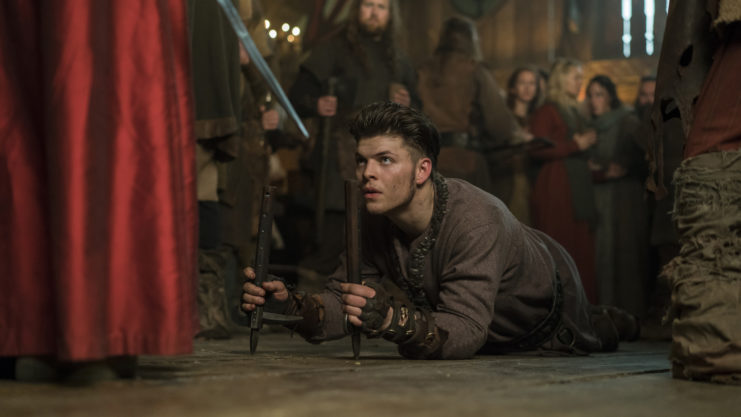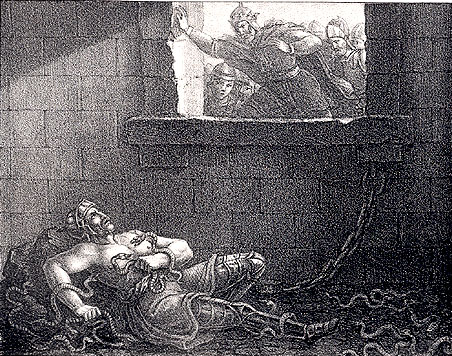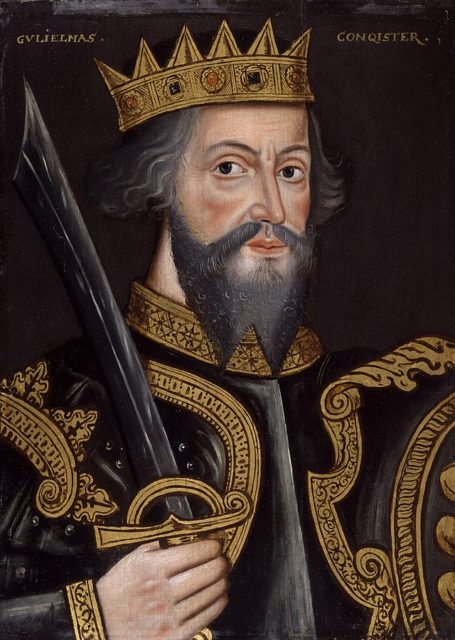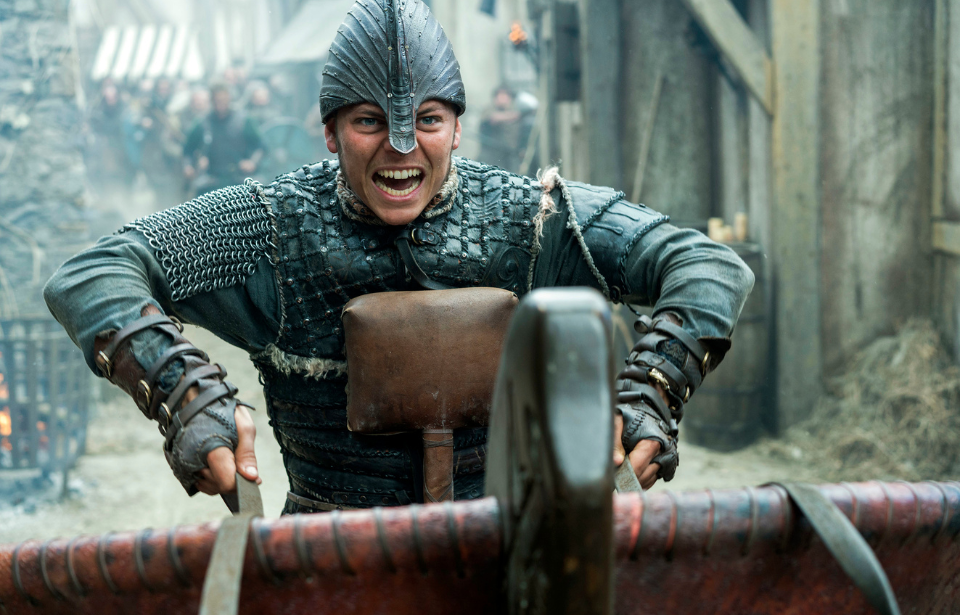The story of Ivar the Boneless has been told for centuries, striking fear into the hearts of Viking children as elders regaled in his most fearsome and epic battles. Most recently, his fearsome story was retold on the popular TV series, Vikings (2013-20). Some say Ivar was the world’s most accomplished disabled warrior, while others believe his reputation is nothing more than legend.
Who was Ivar the Boneless?

According to the 13th-century Nordic saga, The Tale of Ragnar Loðbrok, Ivar the Boneless was the son of Ragnar and his third wife, Aslaug, a seer who foretold her son’s own disability.
Written in the tales as “Ívarr beinlausi,” his name translates to “Ivar legless.” Several Viking sagas describe him as either lacking legs or leg bones, which could potentially have been the result of a skeletal disease called osteogenesis imperfecta – otherwise known as brittle bone disease. A passage about Ragnar’s sons suggests the nickname’s actually a reference to male impotence.
According to legend, Ivar’s condition was the result of a curse foretold by his mother. When Ragnar and Aslaug were first married, the bride asked her husband to wait three nights before consummating their union. Ragnar disobeyed her wishes, fulfilling the curse, which left Ivar – the result of the attack – with weak and disfigured legs.
Ragnar and Aslaug had five sons: Ivar the Boneless, Björn Ironside, Hvitserk, Ubbe and Sigurd Snake-in-the-Eye, all of whom went on to become celebrated warriors. What Ivar lacked in physical strength, he made up for with his sharp mind. One of the greatest military strategists of his time, the Viking sagas described him as “only cartilage where bone should have been, but otherwise, he grew tall and handsome and in wisdom, he was the best of their children.”
Revenge and the Great Heathen Army

According to the sagas, Ragnar was killed by the Anglo-Saxon King Ælla of Northumbria in the ninth century, who threw him into a pit of venomous snakes. Seeking revenge for his father’s murder, Ivar the Boneless and his brothers formed the Great Heathen Army.
Ivar led the force to what’s now England in 865 and waged war against the seven kingdoms of the Anglo-Saxons: East Anglia, Kent, Northumbria, Sussex, Mercia, Essex and Wessex. Despite his disability, he was still a skilled fighter. Entering each battle lifted by a shield used like a stretcher, Ivar could wield a sword and strike down his enemies.
According to the sagas, Ivar couldn’t win against King Ælla. He sought his forgiveness, asking the Northumbrian king to grant him as much land as he could cover with an ox’s hide in exchange for peace. He also vowed to never again wage war against Ælla. Ivar then cleverly took the hide and shredded it into such fine strands that he could encircle the entire fortress of York, the capital of Northumbria.
With York under his control, Ivar tracked down King Ælla and exacted his revenge in the most brutal way known to Vikings: the “blood eagle” ceremony. The slow and painful death was a traditional form of Viking torture, where a person’s ribs were removed from the spine with a knife and the lungs pulled out of the body and spread across the victim’s back like a pair of wings. In Ælla’s case, Ivar’s men poured salt in his wounds to prolong his suffering.
After capturing York, Ivar set his sights on the rest of England, taking his Great Heathen Army on raids, which saw churches and monasteries burned to the ground, leaving nothing behind but “roofless walls.” The Viking leader also famously executed King Edmund of East Anglia after he refused to renounce Jesus, having him beaten with clubs, tied to a tree and shot with so many arrows that he looked like a porcupine. His death was so horrific that Christians later called him Edmund the Martyr.
How did Ivar the Boneless die?

By 870 CE, Ivar the Boneless and the Great Heathen Army had managed to capture most of England and even parts of Ireland. Some records say he died that year, while others insist his death occurred in 873. However, all accounts agree he succumbed to a sudden and brutal disease, potentially the same one he’d struggled with his entire life.
According to the sagas, Ivar insisted he be buried in a place where an enemy attack could occur, prophesizing that any foes arriving on the land would fail. They say his prophecy remained true until William I of England ran the Vikings out of Dublin nearly 200 years after they’d first arrived.
This is how sagas describe William the Conquerer’s heroic victory, “He went to the burial site and broke the mound and saw that Ivar’s body had not decayed. William had a large pyre made upon which Ivar’s body was burned.” After burning the warrior’s body, William, himself a descendant of Viking chieftain Rollo of Normandy, went on to conquer all of England.
More from us: Persian Immortals: The Elite Army Of The Achaemenid Empire
Centuries after Ivar the Boneless’ death, his larger-than-life reputation was still very much alive. In 1686, a farmer discovered a Viking burial mound in Derbyshire, close to where the Great Heathen Army defeated King Burgred of Mercia. The mound, which some historians think could be the final resting place of Ivar, contained nearly 300 partial skeletons surrounding a single male body, including those of children who were ritually sacrificed, suggesting the man buried there was of high status.
The farmer also claimed the skeleton was nine feet tall.
